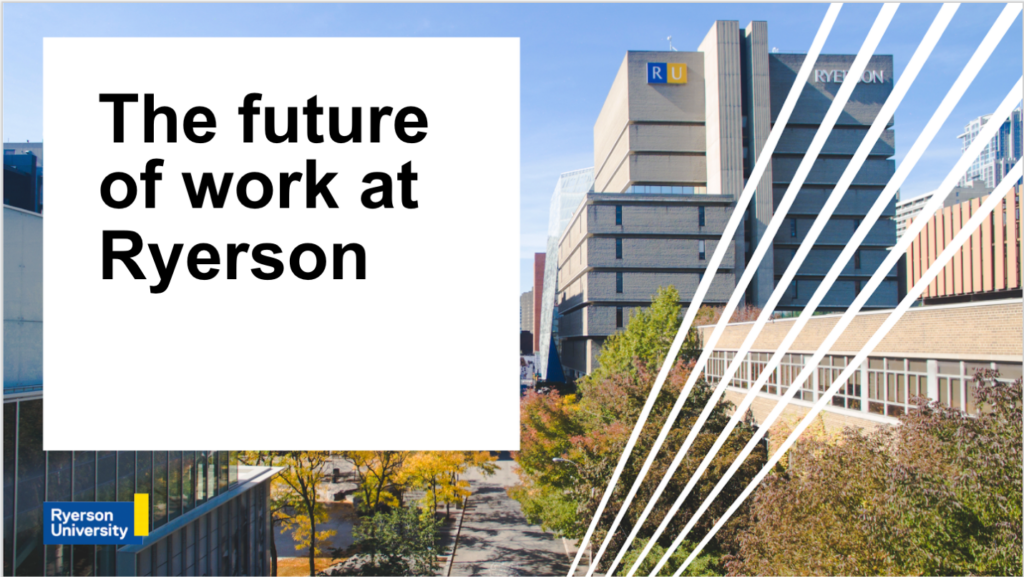
Even once the pandemic ends, Ryerson University intends to move toward a hybrid work model that would see employees work from home, in person, or some personalized combination of both.
That flexibility is what the majority of the workforce seems to want, the university said in a press release entitled: “The future of work at Ryerson.”
The university determined that after nearly a year and a half of online work due to COVID-19, it should adopt a more permanent online model that would benefit all employees.
A hybrid model “provides greater opportunities for accommodations for employees with disabilities and those with primary caregiver duties,” according to the university’s administration and operations department.
The new model will encompass four ways of working: on campus, defined flexibility, flexibility, and virtual.
The on-campus model will require employees to be physically on campus, using equipment the university provides and conducting their work in person.

It isn’t going to be up to individual employees to pick which of the four ways of work they want for themselves.
Department heads assess the work the employee does and evaluate the potential flexibility within their role, according to a statement from the university’s administration and operations department.
Still, their statement notes that the final decision will be based—in order— on the university’s operational needs, the specific individual’s work, and then their own personal preference.
On its website, Ryerson says the university will “put the quality of student experience, course delivery, and research at the center of all flexibility decisions.”
However, there are currently no details on exactly how the university will prioritize student experience in the models that include a virtual aspect.
“One of the most important and positive impacts of this project is that it will build our capacity to adapt as our student needs and expectations for virtual service delivery increase, and as teaching and research activity evolve in the future,” said the university’s administration and operations department.
Currently, there is no set time frame for when Ryerson will adopt this more flexible work style.
“This transition will be phased and gradual, and departments will be able to set their own pace over the next few years,” according to the university’s administration and operations department. “Some departments will be early adopters, and others will need to take more time to determine how this impacts their operations.”
However, the administration and operations department has a vision for the first three years of the transition.
Per its emailed statement, in the first year, “raising awareness, developing tools and resources, and preparing for and supporting change” will be the main area of focus for the department.
The second year will prioritize further development of operational plans, and the third year will be when most administrative units will hopefully be in place.
